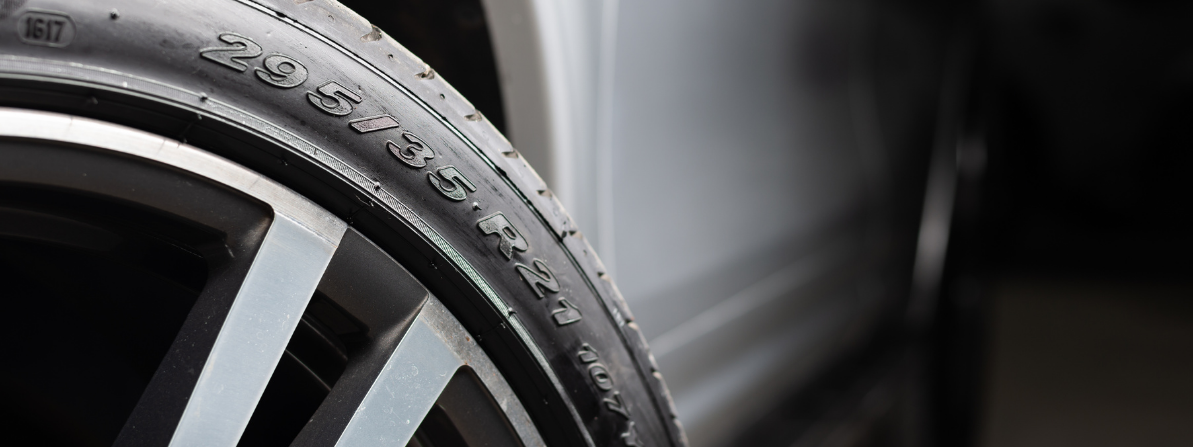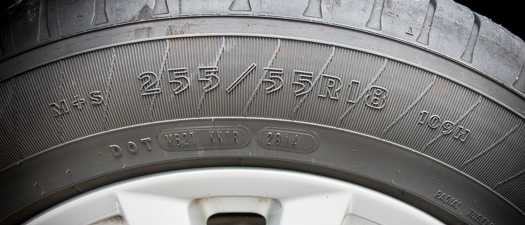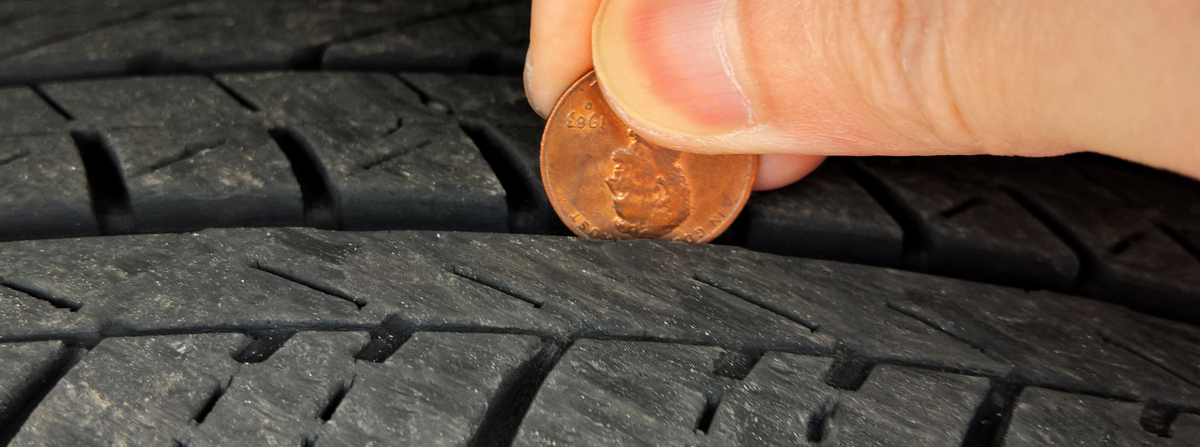
Jan 11, 2022
What Do the Numbers and Letters on Your Tire's Sidewall Mean?
What do the numbers and letters on the sidewall of your tire mean? These numbers may be intimidating at first glance, but we’ve put together a simple guide to help you know what these numbers and symbols mean, and how you can use them to care for or even purchase new tires. These numbers and letters will help you know what the tire size, load index, speed rating, Department of Transportation (DOT) serial number, and so much more are.
Tire Size
The biggest set of numbers on your tire sidewall make up your tire size. Using tire size P205/65R15 from the image above as an example, let's learn how to read your tire size.
P - The letter at the beginning of the tire size is the tire type. Depending on the type of vehicle you drive, you will need a tire that accommodates it’s needs. In this example, the “P” in this tire size stands for Passenger. It could also read “LT” for light truck, which means the tires are designed for a heavier vehicle like an SUV or pickup truck.
205 - The next set of three numbers make up the width of the tire sidewall. The width is the measurement from sidewall to sidewall in millimeters. The width of this tire would be 205 millimeters.
65 - After the slash in the tire size is the aspect ration. This number represents the percentage ration between the sidewall height and the width of the tire. For this tire size, the 65 means that the sidewall height is 65% of the 205mm tread width.
R - Following the aspect ration is the tire's construction type. In this example, the "R" means it's a radial construction. Although "R" is the most common, there is also "B" for belted bias and "D" for diagonal bias construction.
15 - The last set of number in the tire size represent what size rim or wheel, measured in inches, the tire will need. In this case, the tire will need a 15-inch wheel or rim.
Load Index and Speed Rating
Following the tire size, you will see a set of numbers followed by a letter. Let's use 94 H as an example from our graph shown above. The first set of 2-3 numbers are the load index followed by a letter indicating the speed rating. In this case, the load index is 94 and the speed rating is H.
The load index indicated what the maximum weight that the tire can support is when it has been inflated. The speed rating indicates the maximum speed capability or limit at which the tire was designed to perform at.
U.S. Department of Transportation (DOT) Serial Number
All tires that are sold in the U.S. must have the U.S. Department of Transportation (DOT) serval numbers printed on each and every tire. This indicated that the tire has passed all minimum standards to be sold in the U.S. It's important to know how to access and read these numbers to refer to in the event of a tire recall or to know how hold your tires are.
There are several components that make up a DOT serial number. Let's break it down using the example from the image above; DOT 1234 5678 5212.
DOT - The initial DOT acknowledges the tire has passed the U.S. DOT minimum standards for a tire sold in the U.S.
12 - The first two numbers in the DOT serial number represents the company who manufactured the tire, like Continental Tire or Goodyear.
34 - Th next two numbers represent the production plant or factory the tires were made in.
5678 - These numbers represent specific bran or tread characteristics, or tire type that are determined by the manufacturer. These identifiers are optional.
5212 - The last 4 numbers of the DOT serial number are the date codes. The first two numbers indicate the week of the year your tire was produced in and the lat two represent the year, starting at 2000. In this example, the tire was produced in the 52nd week of the year (December) in the year 2012.
Prior to 2000, three numbers are used for the date; the first two numbers indicate the week, and the last number identifies the year. Tires manufactured in the 90s, a decade symbol (a triangle on it's side) is located at the end of the DOT serial number.
M+S and the Three Peak Mountain with Snowflake Symbol
When the letters "M+S" appear on your tire's sidewall, this indicates that the tire is an all-weather tire designed for muddy or light snow conditions. When the three peak mountain snowflake (shown below) is also listed, this indicated the tire classified as a winter tire by the I.S. DOT. Winter tires may also have added an "E" to the code to indicate extreme winter weather. It can be seen listed as "M+SE".
Also listed on your tire sidewall:
- Tire manufacturer name and logo
- Name of the exact tire model
- Maximum tire load
- Maximum tire pressure
- Tire ply information
- Tread wear indicator
Still need help reading your tire's sidewall? Sullivan Tire and Auto Service experts are here to help! Please feel free to contact us my phone, email, or live chat with us on our website today. We're always here to get you there.
Additional Tags
Find Tires
Easily find tires for your vehicle and get pricing on our website. To search, all you need is either your desired tire size or your vehicle information.
Find TiresRelated Articles








